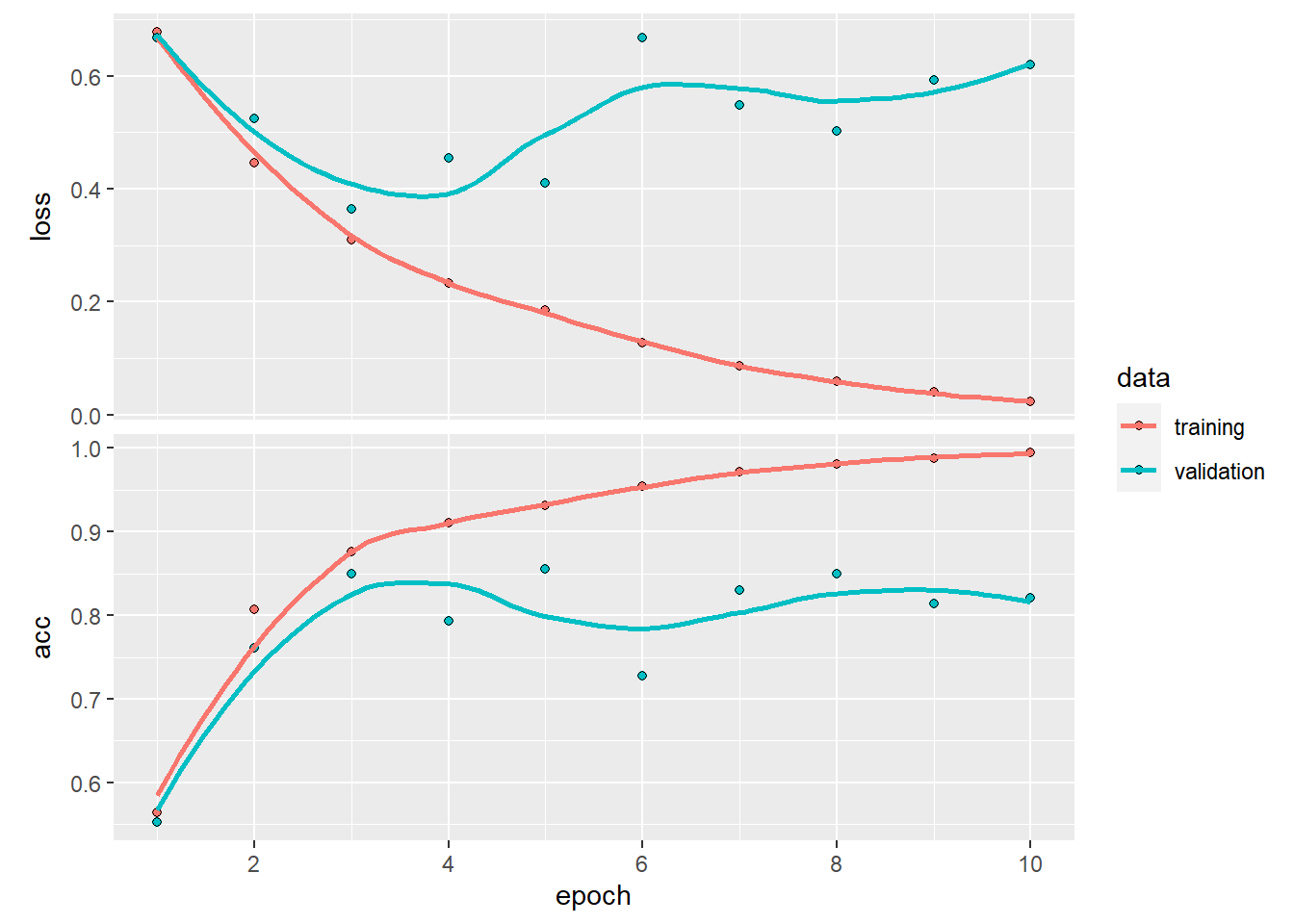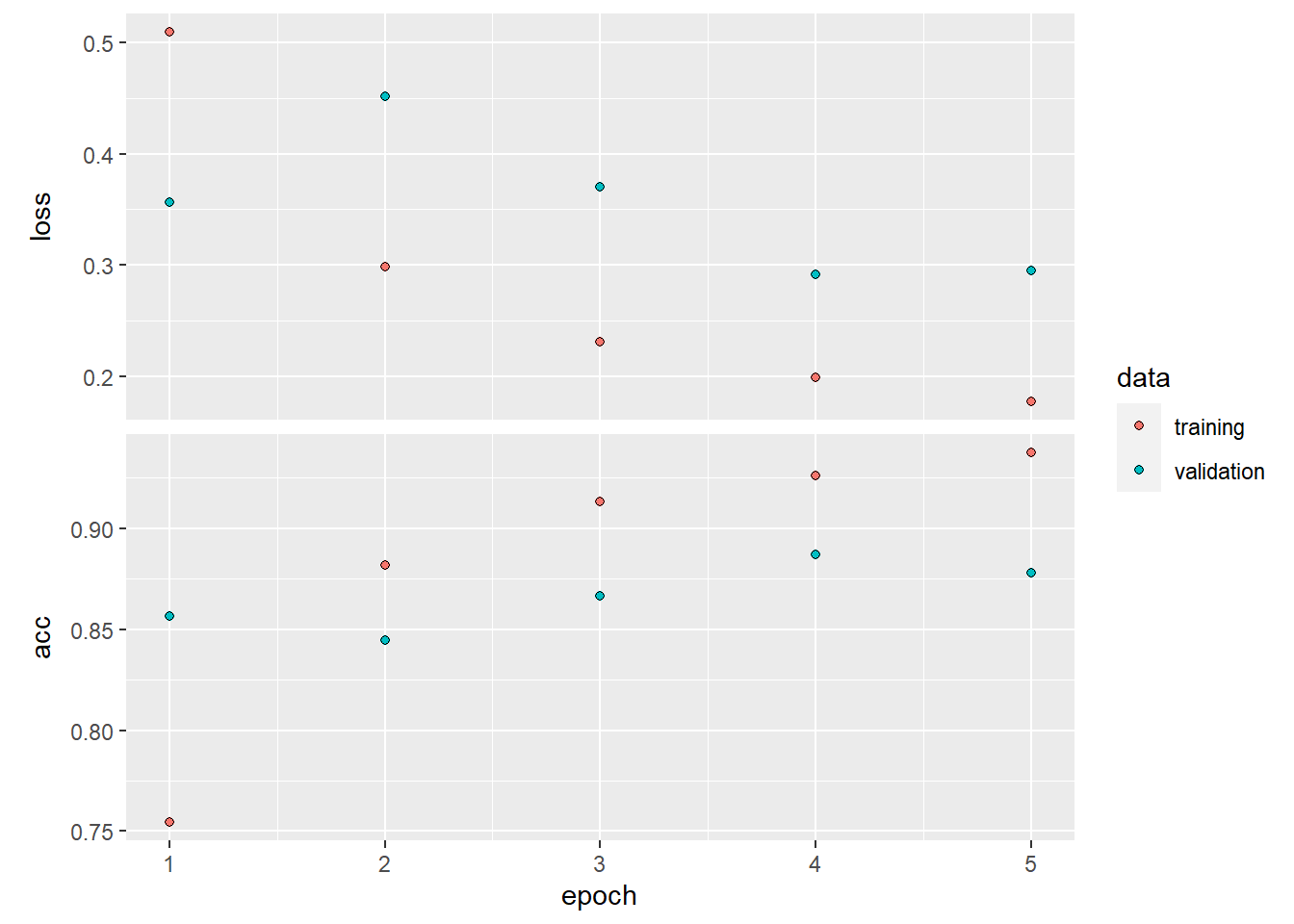Chapter 5 Reccurent Neural Networks (RNN)
5.1 Understanding Recurrent Neural Network
5.2 RNN with Keras
library(keras)
max_features <- 10000 # Number of words to consider as features
maxlen <- 500 # Cuts off texts after this many words (among the max_features most common words)
batch_size <- 32
cat("Loading data...\n")## Loading data...# load data
imdb <- dataset_imdb(num_words = max_features)
c(c(input_train, y_train), c(input_test, y_test)) %<-% imdb
cat(length(input_train), "train sequences\n")## 25000 train sequences## 25000 test sequences# pad sequences
input_train <- pad_sequences(input_train, maxlen = maxlen)
input_test <- pad_sequences(input_test, maxlen = maxlen)
cat("input_train shape:", dim(input_train), "\n")## input_train shape: 25000 500let’s train the model
model <- keras_model_sequential() %>%
layer_embedding(input_dim = max_features, output_dim = 32) %>%
layer_simple_rnn(units = 32) %>%
layer_dense(units = 1, activation = "sigmoid")
model %>% compile(
optimizer = "rmsprop",
loss = "binary_crossentropy",
metrics = c("acc")
)
history <- model %>% keras::fit(
input_train, y_train,
epochs = 10,
batch_size = 128,
validation_split = 0.2
)
plot(history)## `geom_smooth()` using formula 'y ~ x'
5.3 LSTM with Keras
model <- keras_model_sequential() %>%
layer_embedding(input_dim = max_features, output_dim = 32) %>%
layer_lstm(units = 32) %>%
layer_dense(units = 1, activation = "sigmoid")
model %>% compile(
optimizer = "rmsprop",
loss = "binary_crossentropy",
metrics = c("acc")
)
history <- model %>% keras::fit(
input_train, y_train,
epochs = 5,
batch_size = 128,
validation_split = 0.2
)
plot(history)